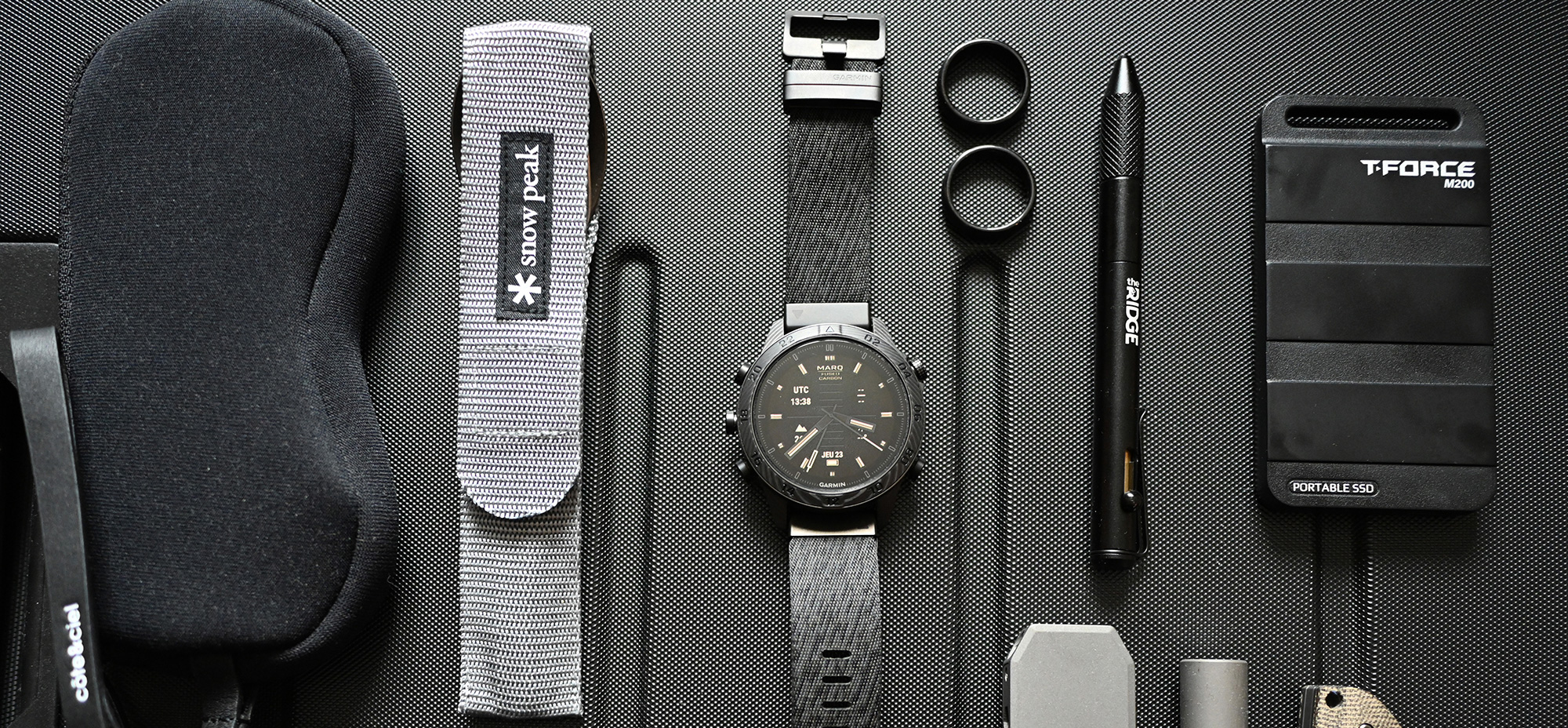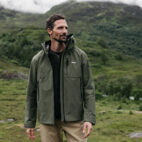Packing List | World’s Biggest Salt Desert
What do you pack for exploring one of the world’s biggest salt deserts? No stranger to harsh and demanding environments, anthropologist, photographer, filmmaker, and adventurer, Benjamin Pothier, shares his packing list for venturing into the Rann of Kutch.
Due to my previous experiences in extreme environments reporting Moon and Mars missions simulations, I was recently sent on assignment as a photographer and journalist for a French printed magazine considered by the New York Times as “one of the world’s best outlets for photojournalism”, to cover the work of Aastha Kacha Jhala, India’s first female space architect. I was given the unique opportunity to join her and her team for a mission in the White Rann of Kutch, one of the largest salt deserts in the world located at the India/Pakistan border in the northwest of India.
This was also an opportunity for me to field test the first batch of the new 3DA COR – BLK Backpack from Bagjack that I had the luck to have a first look at during Paris Fashion Week with a demo by Bagjack’s legendary Founder and Designer Peter Brunsberg A.KA. P.E himself.
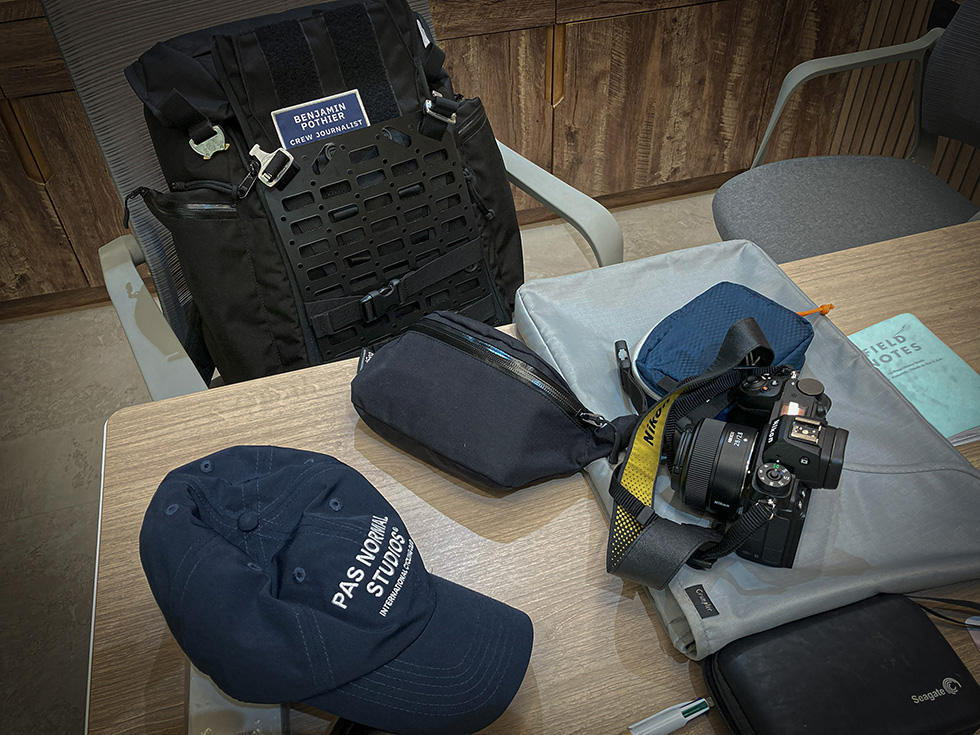
It was my first time in India and the whole trip including the expedition in the desert was more than awesome. I also updated my EDC since my last article and have given some insight about my current setup as well as a quick techwear “review” of any cool technical garments I’ve been using recently at the end of the article.
I already had a few experiences of the desert, having lived for example in the Atacama desert in Chile. Based on my previous experiences I packed several items both for comfort and safety, and to ease my work as a photographer in this demanding environment.
I left rainy Paris for a 12-hour and pretty comfy flight to finally land in a quite warm Ahmedabad, the most populated city in the Indian state of Gujarat. I was still a bit jet-lagged and I used my time in the hotel to repack my gear specifically for photojournalism… and to prepare for any eventualities in the desert.
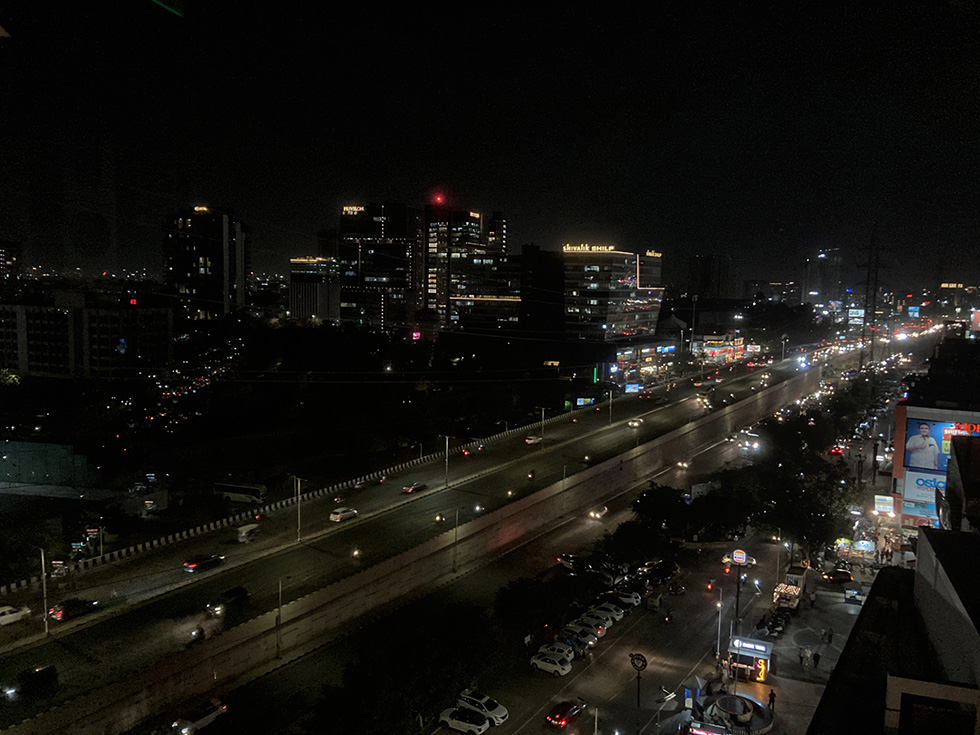
If you follow my work you probably already guessed that the duffle bag I used to carry all the items that were not allowed in my carry-on, as well as the most heavy and bulky gear in my setup (like my tripod) was as always my NARGEAR Bodybag, a heavy-duty duffle developed for parachuting firefighters. I’ve been using the same duffle for the past ten years, from 20° from the North Pole to the Atacama desert in Chile and it’s barely started to show proof of wear except for scratches and cosmetic wear.
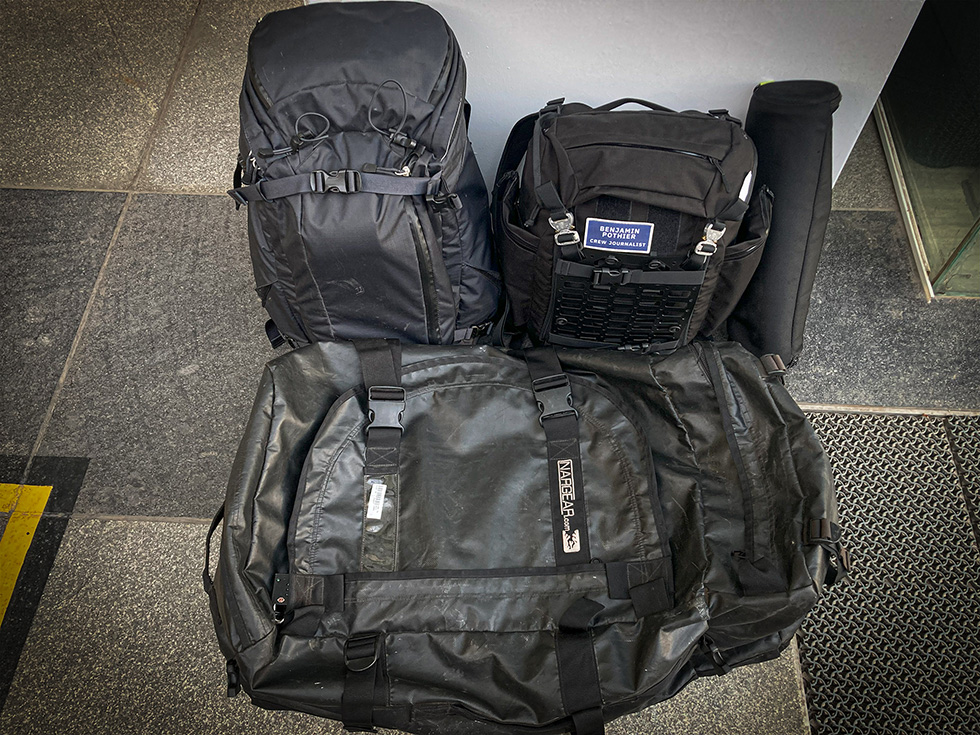
I prepared my daypack with my first aid kit, spare sunglasses, water, flashlight, and emergency chemical light, and recharged my camera batteries and smartwatch. And finally fell asleep in a comfortable suite in an international hotel with quite serious security measures at the gates.
The next day the team came to pick me up at the hotel and after an eight-hour drive under the blazing sun, we finally arrived at the border of the Rann of Kutch desert.
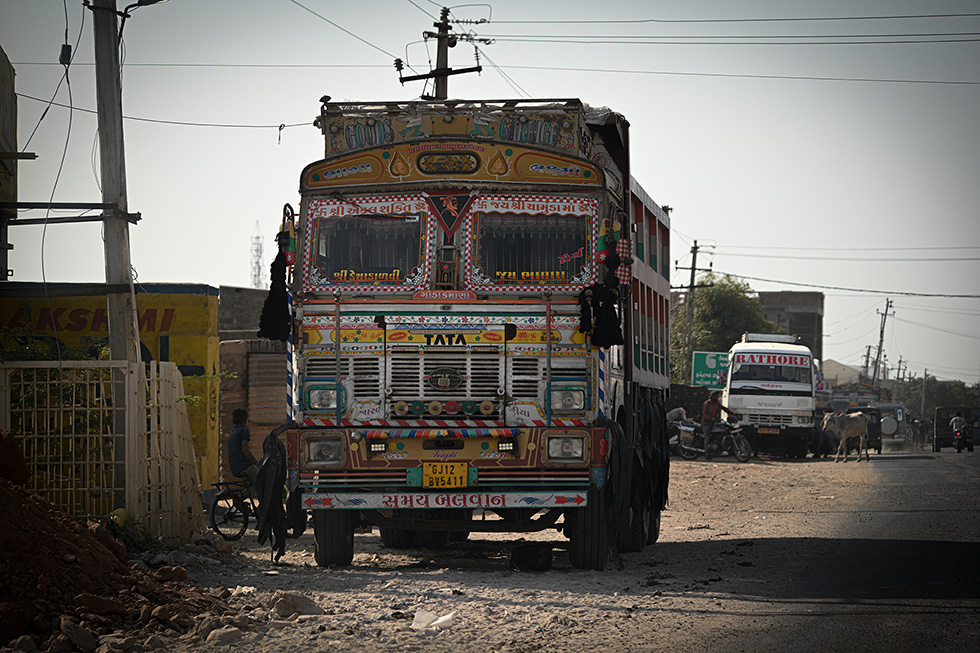
The temperature was already very high. During my stay there it was not recommended to venture outside between 2 p.m. and 5 p.m., and during the year the temperature can flirt with 50°C (122°F). The Rann of Kutch is undoubtedly unique: No vegetation on the horizon, for kilometers, and as far as the eye can see the ground is covered with a thick white layer of salt.
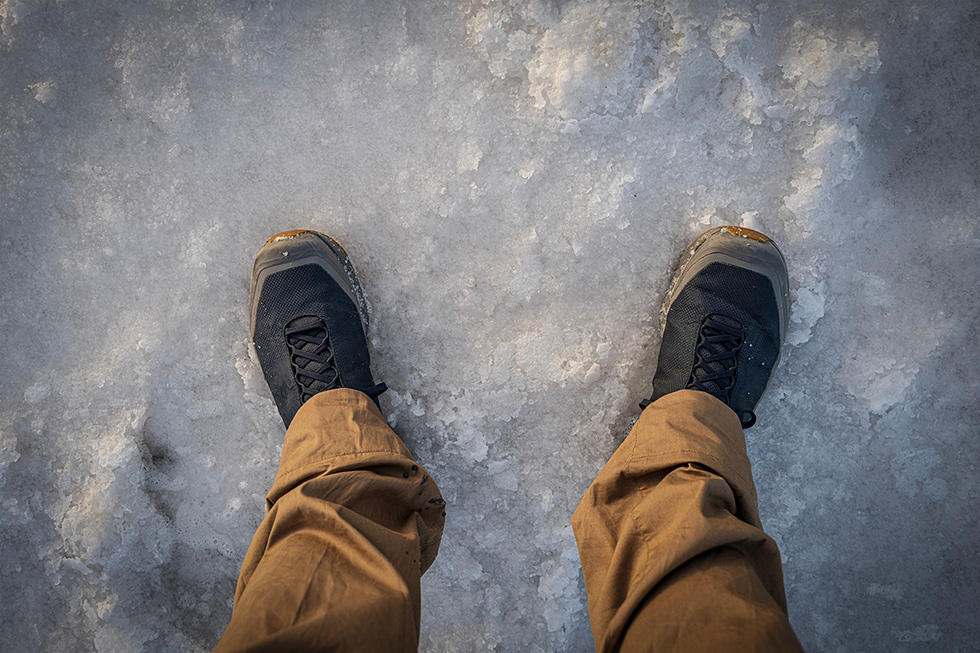
For researchers, this hot, dry, and salty environment is a very good place to practice how one day astronauts will be looking for traces of life – however small they may be – on Mars. It is no coincidence that SETI teams, the organization responsible for the search for extraterrestrial life and intelligence, have in the past organized research in very similar environments, such as the Atacama plateau in Chile.
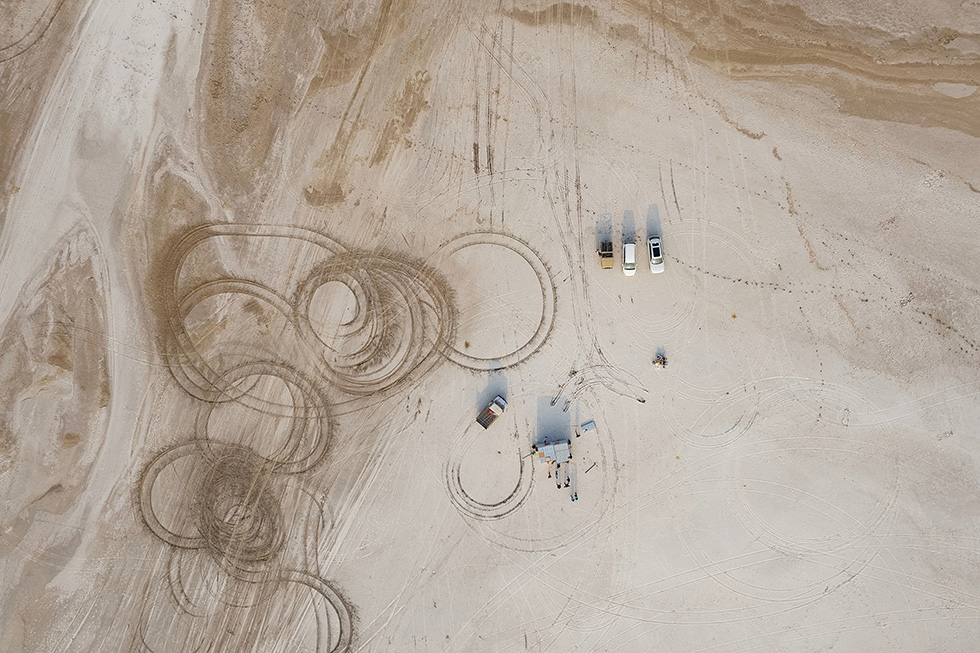
Here in this isolated landscape, Aastha’s team at AAKA SPACE STUDIO is testing various habitat prototypes and concepts that might one day end up on the Moon or the Red Planet.
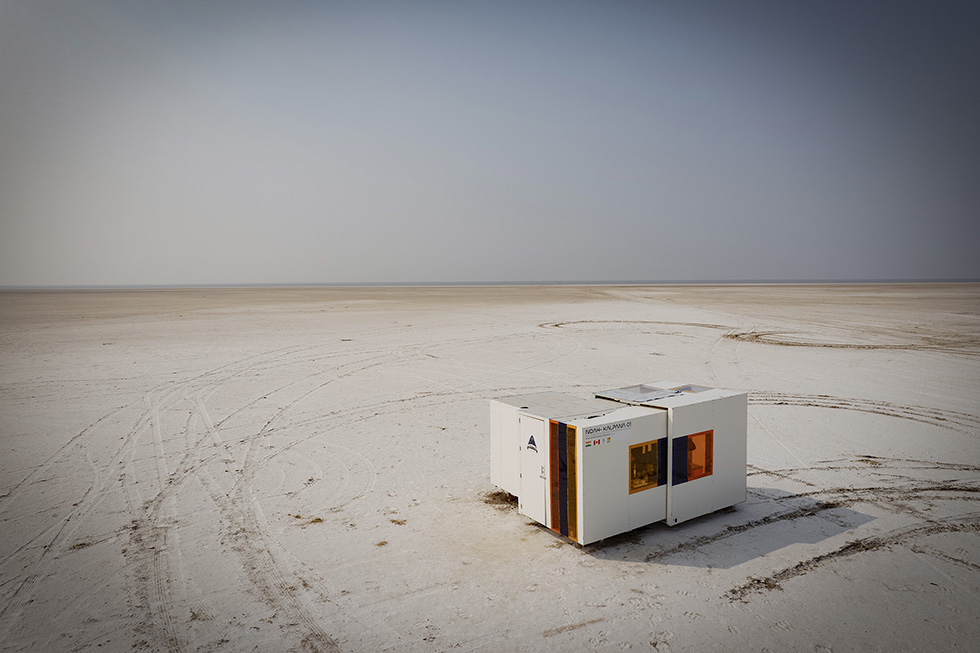
After a visit to the habitat used for Moon mission simulations, we got a glimpse of the “astro tourism” experience that Aastha and her team are developing, with a unique stargazing experience from the heart of the white Rann desert after a 30-minute drive from our basecamp. It felt very surreal to experience such beauty in this unique desertic no man’s land at the Indian/Pakistani border.
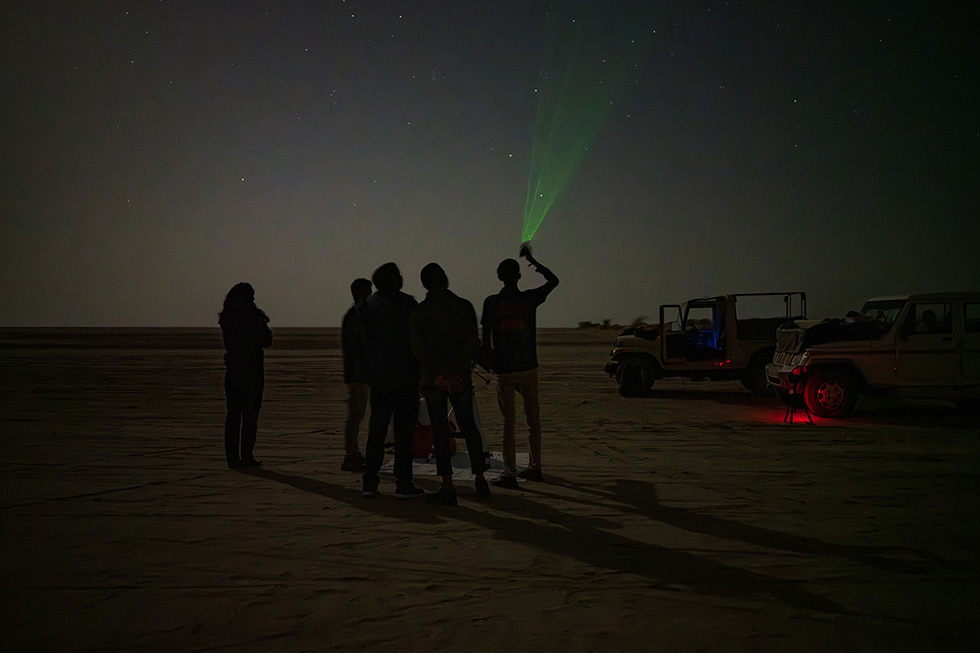
The nights can get cold quite quickly in the desert and luckily enough I had brought a Veilance Quartic Jacket in an almost “white desert camo” with its so-called “Dark Cocoon” color, a “midweight softshell providing light warmth and transitional weather protection”. I also made good use of some Cyalume light sticks to mark the place of my tripod on this reasonably dark night.
We got back to the desert the next day to do some astrobiology simulation. During the hardest part of the days I protected myself with a shemagh and Vuarnet sunglasses. Those legendary sunglasses were developed for glacier hiking but I found them perfect for a desert trip with their unique protection on each side of the eyes.
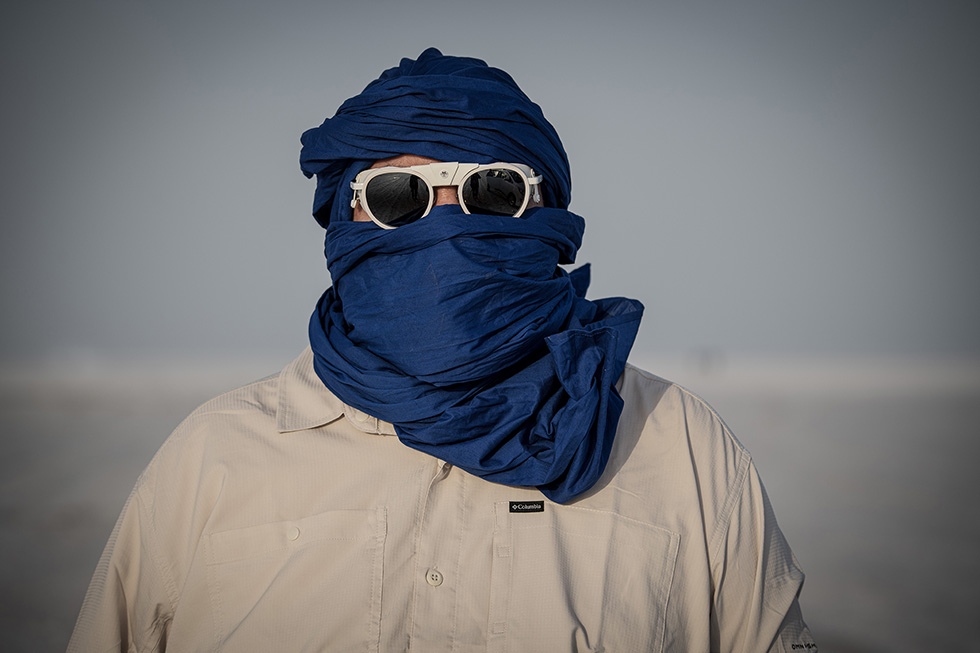
The hours passed and everyone was busy replicating one of the tasks that the first Martian explorers will do: searching within this desert for potential traces of life, or rather in our specific case “past life”, what NASA would call a “life marker”. The space agency is indeed still very actively looking for potential evidence of past life on Mars through its various robotic rovers.
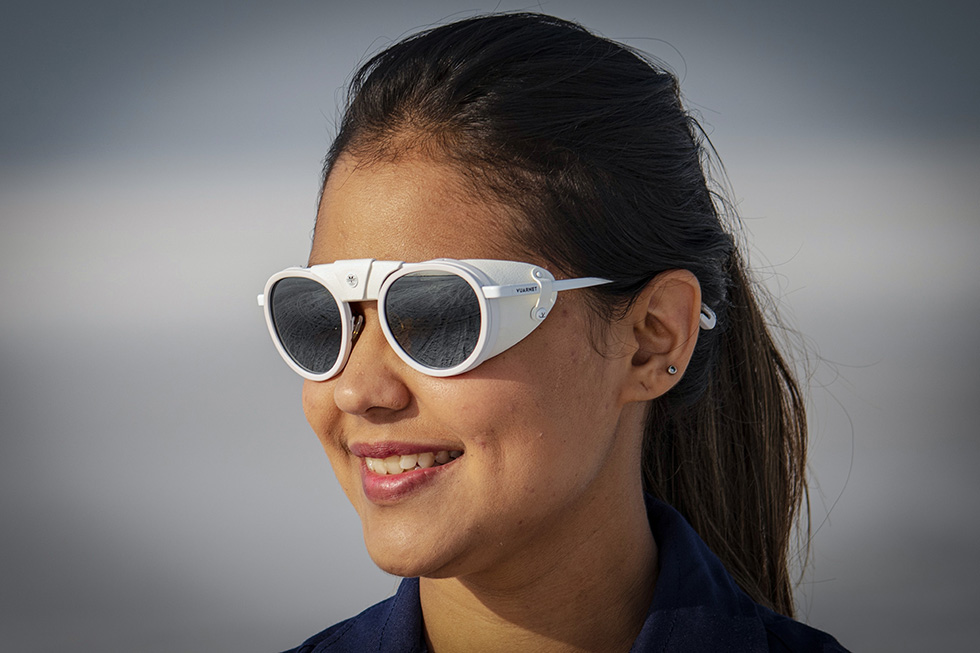
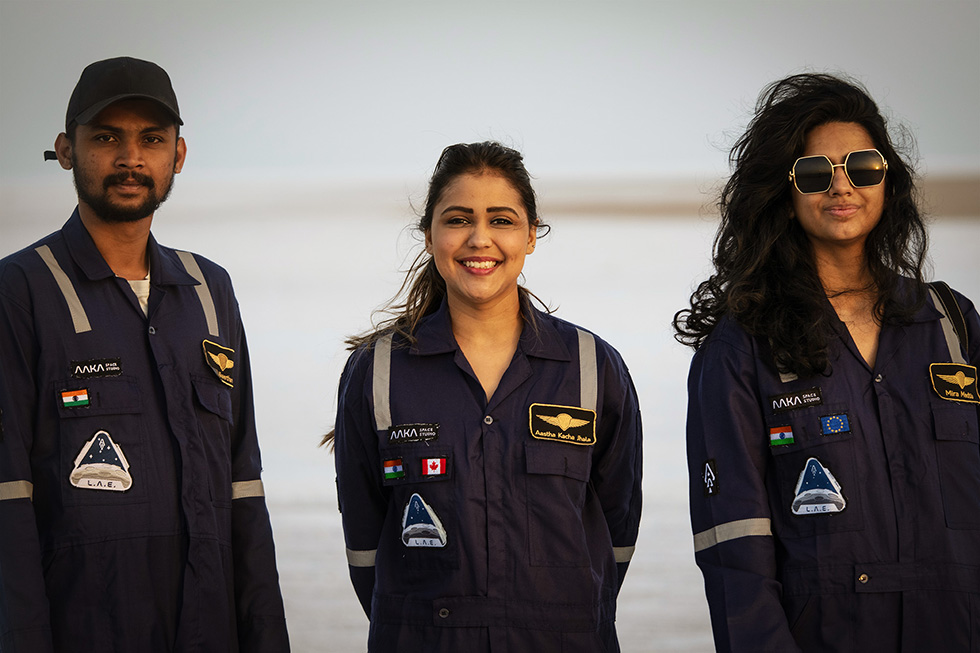
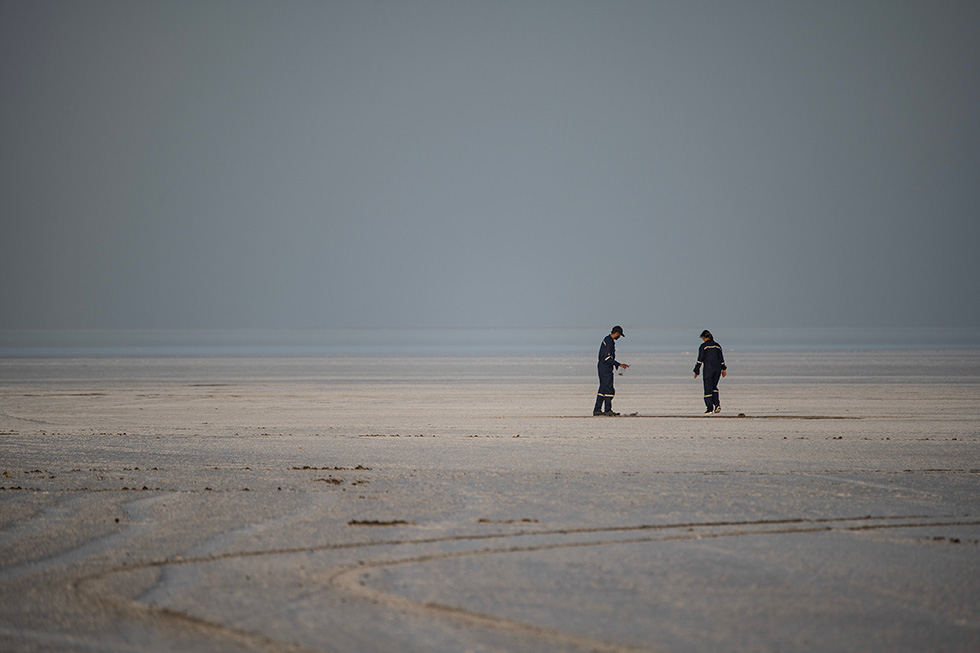
Here in Kutch there are no little green men of course, nor even – and this would be more realistic – defunct Martian bacteria. The team therefore simulated a potential Martian mission by collecting a few insects that had passed away and even a bird caught in an imposing salt crust. No doubt, even if the environment here is not entirely similar to Mars it is nevertheless just as merciless for organic life.
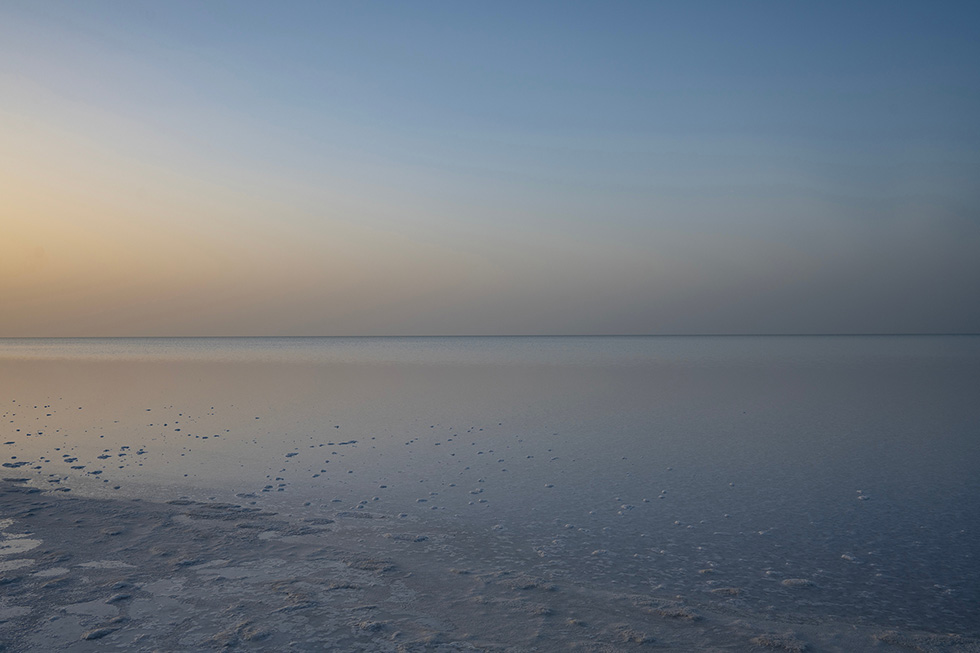
Despite this, and it is nevertheless obvious, the Rann of Kutch is incredibly beautiful. The boundaries between sky and earth are sometimes indistinct depending on the time of day and the seasons, the shades of white are infinite, and the whole thing creates a very disconcerting and almost hallucinatory landscape, like a Zen and ultra-minimalist painting always in mutation.
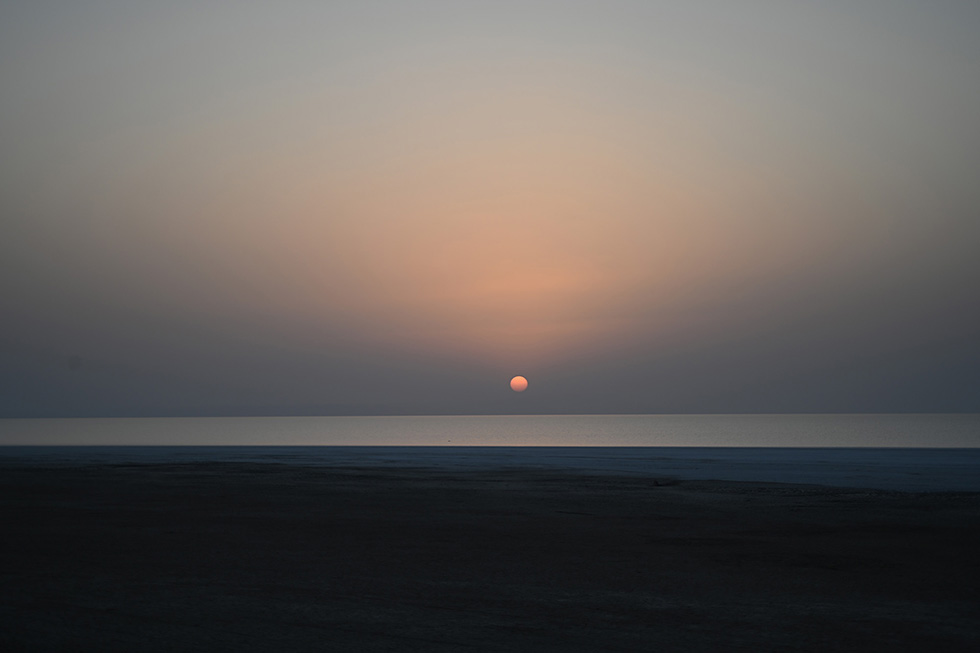
A sort of negative of a black painting by Mark Rothko. The feeling of actually being on another planet, and outside of time, is incomparable. The mirages specific to deserts are even more disturbing on this white expanse and end up reinforcing the intensity of the experience on the ground.
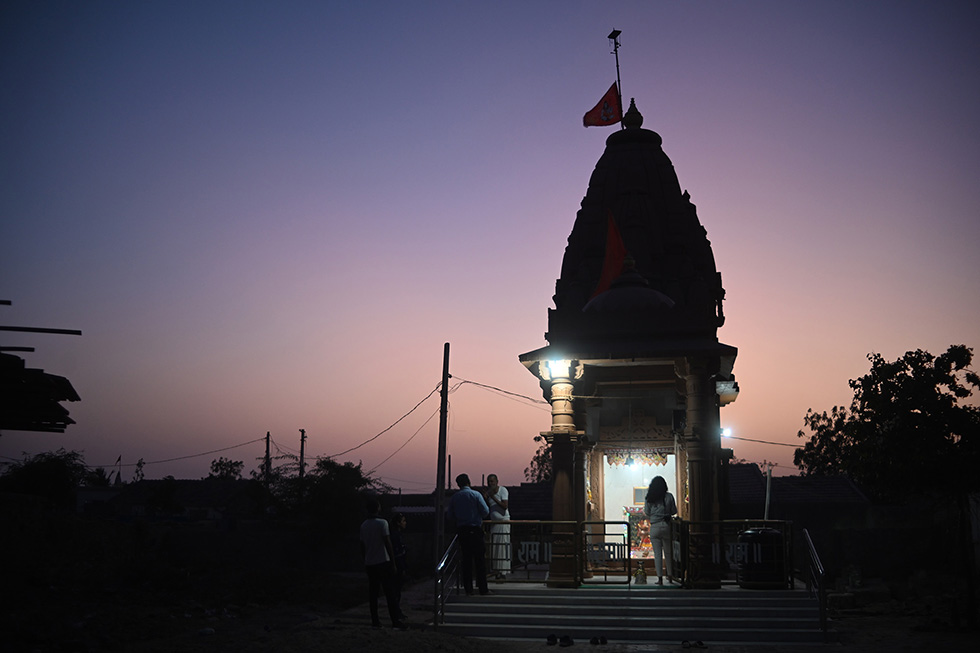
That night after a discussion between myself, our driver, and Aastha, I learnt that Aastha’s studio had worked on the rebuilding of a Shiva temple in the village where we were staying at the border of the white desert. And we went at night just before the closing of the temple to visit it, a memorable moment.
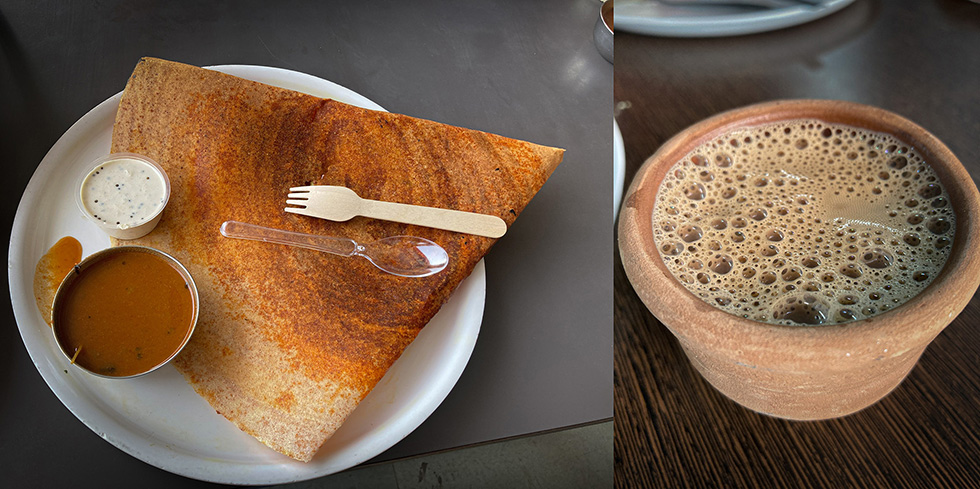
I also indulged myself with wonderful treats during this trip, tasting Indian and especially Gujarati specialties, but also some meals that I was told were traditionally much more from the South of India.
But let’s get back to my gear…

For my daypack I used the 3DA COR – BLK Bagjack “assault pack”. The Form Vs Function factor is definitely high on this beast of a backpack. At this point the only reference I could find in terms of design while writing this review is with the batmobile in Christopher Nolan’s Batman trilogy! I love its overall design and in terms of practicality, it is definitely above average. The backpack is indeed partly the result of design research that Bagjack conducted for Special Forces units.
It is so well thought out that my first impressions in terms of use reminded me instantly of my previous training as a first responder. This backpack is amazing in part due to its large double zippers and single-handed front opening, making it indeed perfect as a first responder bag or Special Forces assault pack, but undeniably a luxury one!
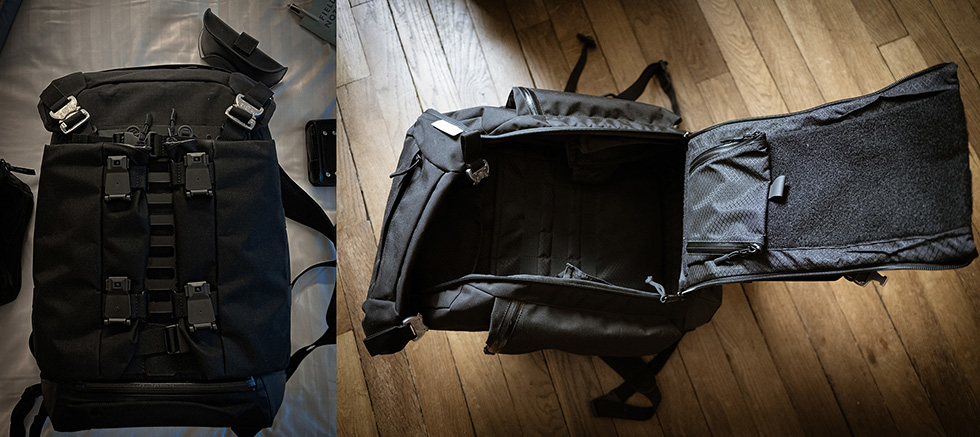
This video demonstrates the incredible versatility of the 3DA COR – BLK.
During the expedition I put my camera on top of the backpack using the top opening, while I used the front opening from time to time to quickly and safely access various small packs that I used to “sub-pack” inside the bag the way we learned to do as first responders.
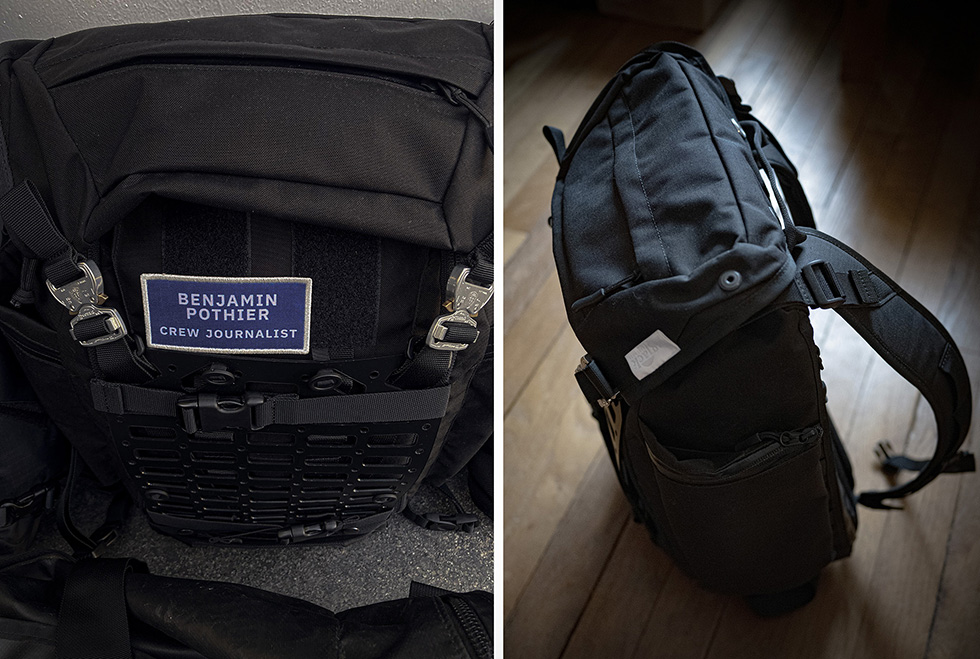
A very innovative and I think quite unique design is also the two “flying” large pockets on each side of the bag, that can be attached on the side or locked in front, protecting in a way the contents of the bag from any unauthorized front access.
With a carrying capacity of 28 liters, the Cordura backpack comes with a lined laptop compartment up to 14″, various rows of MOLLE systems inside and outside the bag, waterproof YKK zippers, Cobra® quick-release fasteners, some amazing removable hip straps on each side that can be stored in two “hidden” side pockets, and in terms of really hidden pockets I’m sure that I may already have missed some as this work of art is full of wits and tricks! Since I got back from the Rann of Kutch the 3DA COR – BLK has become my all-time favorite daypack.
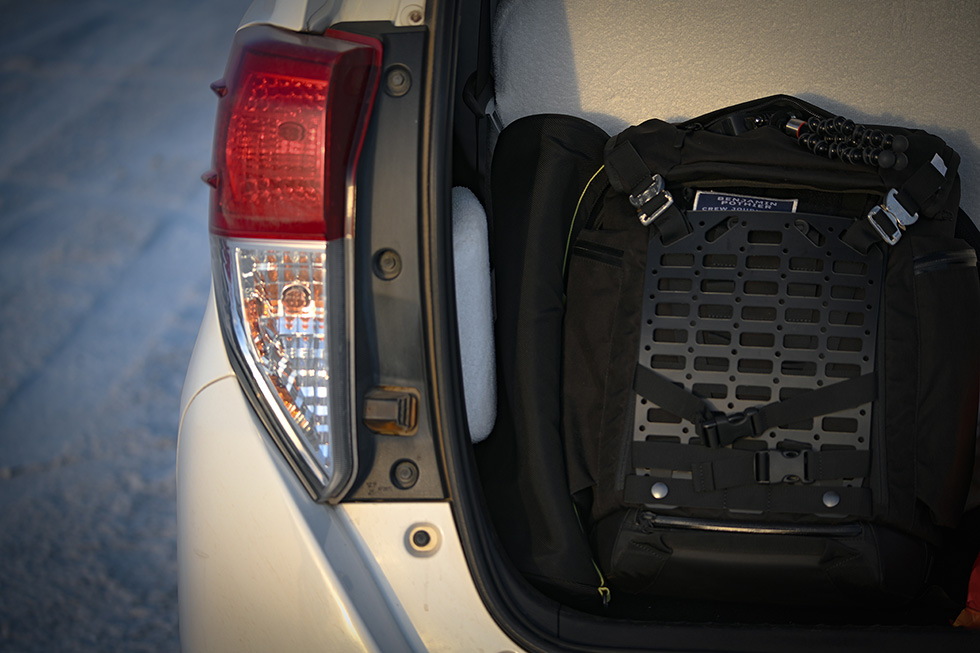
This particular item is certainly the result and epitome of Bagjack’s incredible attention to detail, their quests for innovative design, and their unquestioned exceptional craftsmanship that in my opinion hasn’t stopped enhancing since the opening in 1997 of their first production facility in Kreuzberg, a Berlin district also made famous by its vibrant Punk rock and hip-hop scene since the 1970s.
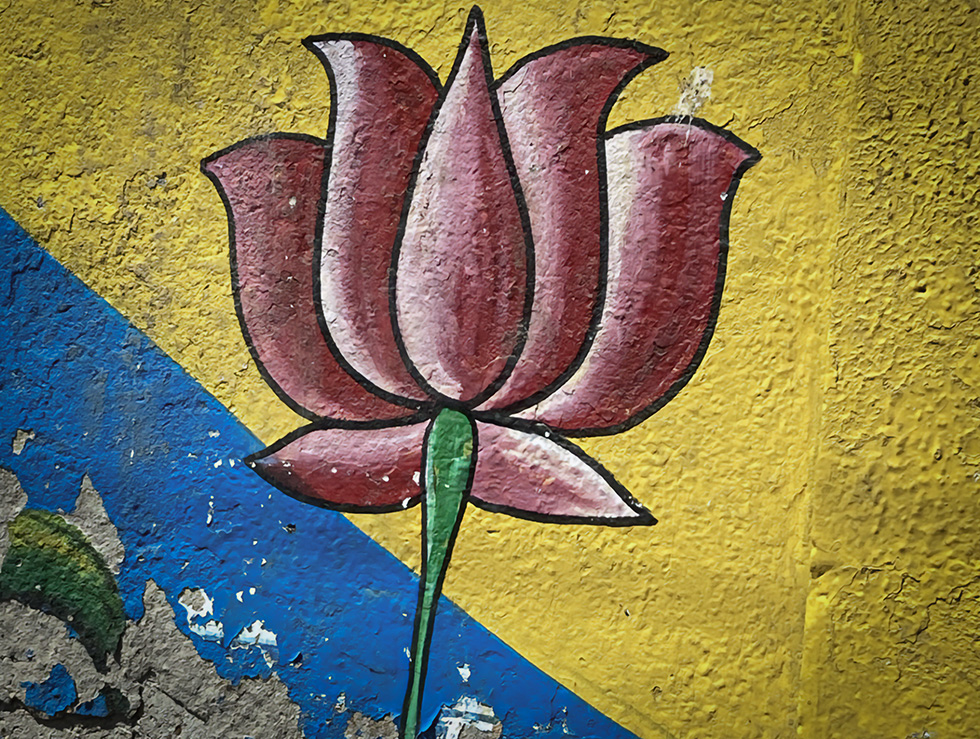
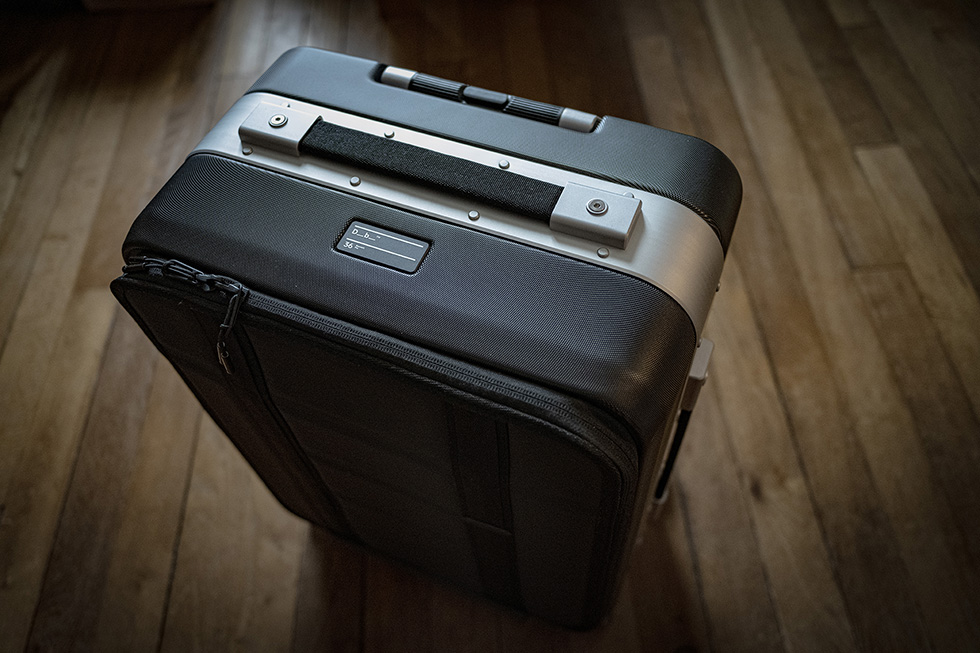
Staying in the bags and luggage category, I also recently got the opportunity to test what I would describe quite frankly as one of the best carry-on luggage options for professional photographers available on the market these days. I certainly don’t select my gear randomly and I have to admit that I absolutely love the design and build of the RAMVERK PRO, and if you follow my work you probably know why. I appreciate the Db RAMVERK PRO for its design but also high quality and high performance, even more so considering that it is made from mostly recyclable materials. It feels and certainly is very durable yet stylish in a very contemporary way.
The ultra-silent 360° Hinomoto Japanese wheels and ultra-robust telescopic handle designed by Db teams are some of the many details that make the RAMVERK PRO front-access carry-on stand above your average wheeled carry-on luggage. Not to mention in the niche market of Photography carry-on. Forget your average rugged plastic-wheeled case and enter the world of a carry-on with a design coming straight from the Ghost in the Shell anime.
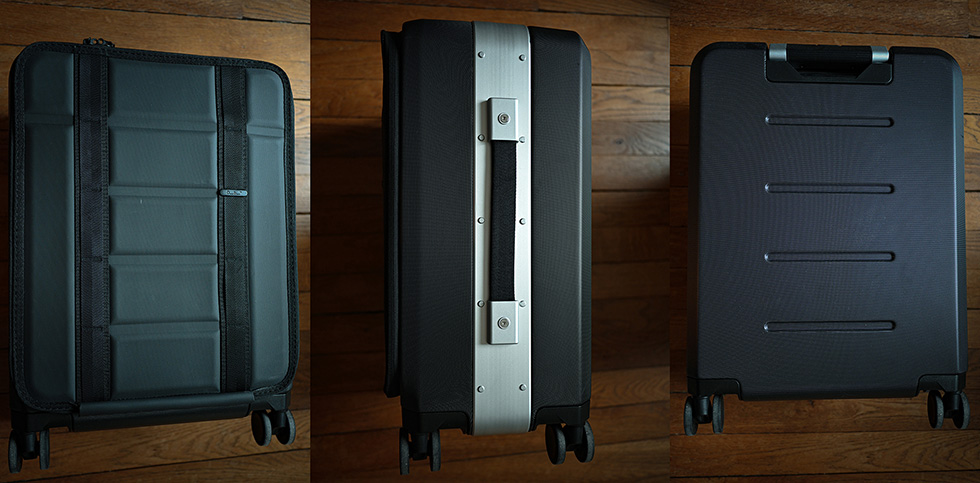
I must add however that I think the RAMVERK PRO, and specifically the front access version, is probably not a carry-on made for everyone but only for pro photographers and filmmakers who like to travel in style with a certain peace of mind about the safety of their precious gear.
For the average consumer the luggage might be a little heavy (4.23kg), and considering its size (54 x 39.5 x 24 cm (H x W x D)) it will fit in the overhead bin of many but not all the major airlines and wouldn’t be my option for economy flights or non-professional trips.
As I said I enhanced my EDC in the last couple of months, mostly in all-black or titanium finishes. One item that transcends my daily carry is probably my new watch:
GARMIN MARQ Commander – Carbon Edition
At a weight of 76g, I have to admit that I had never worn a watch that felt so light on my wrist, though I have no doubts about the durability and performance of this amazing smartwatch, or “tool watch” as Garmin calls it.
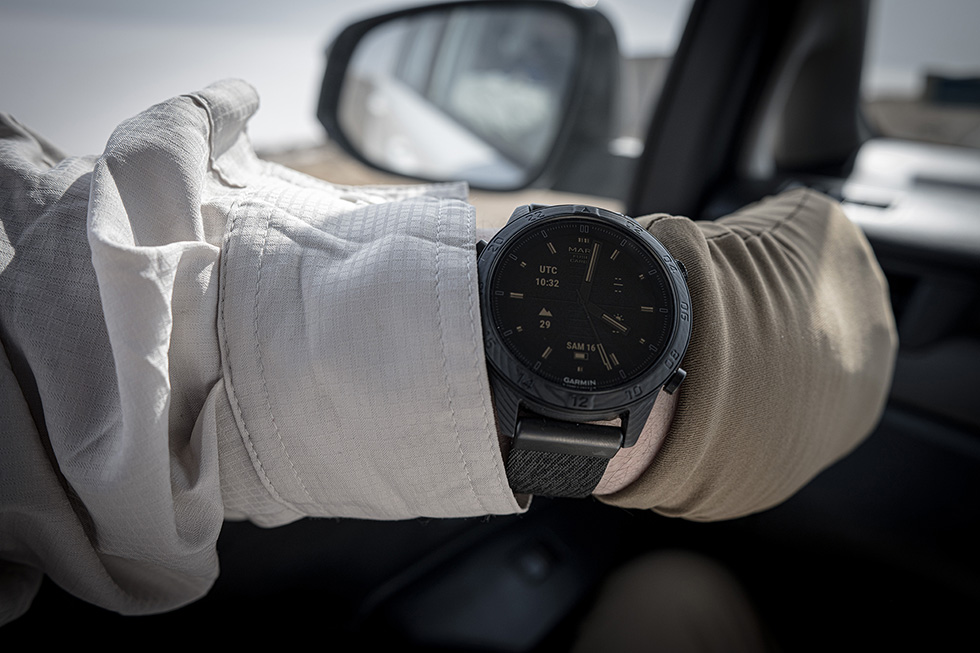
This particular timepiece feels a bit like the “Swiss Army knife” of smartwatches. I love the Fused Carbon Fiber look, which makes it a perfect blend between tactical and luxury: at home in the field or at the cocktail bar of my hotel. But beyond its clean look and design, the MARQ Commander Carbon Edition comes with an impressive list of applications and embedded sensors for the demanding professional. With a reasonable 10 ATM waterproof rating, the tool watch includes a multi-band GPS that can even be put in “stealth mode”, and a “kill switch” that will instantly erase all your precious personal data stored inside the watch in case of any trouble.
Multiple time zones on screen gave me the opportunity to keep in touch with my editor back in Paris while planning my interviews and shots daily in Ahmedabad. I now use many of the watch apps daily, from daily step counts to monitoring my heart beat rate.
EDC
My GARMIN MARQ Commander Carbon Edition tool watch is therefore now a part of my EDC along with these other items and tools:
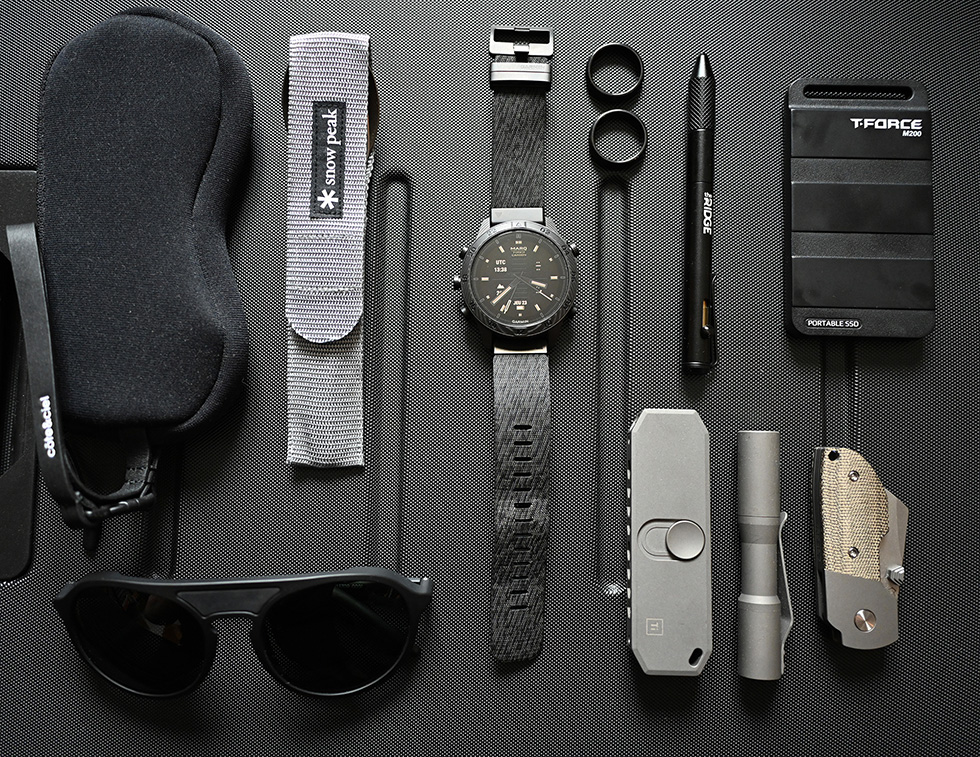
From left to right and top to bottom:
Côte & Ciel Eyewear Pouch Neoprene
Snow Peak Titanium Fork & Spoon Set
(I also brought a Snow Peak titanium mug for this mission)
GARMIN MARQ Commander Carbon Edition
Micro Click Titanium Flashlight
Finally, here is a list of the technical garments and a few other accessories that I brought for this trip.
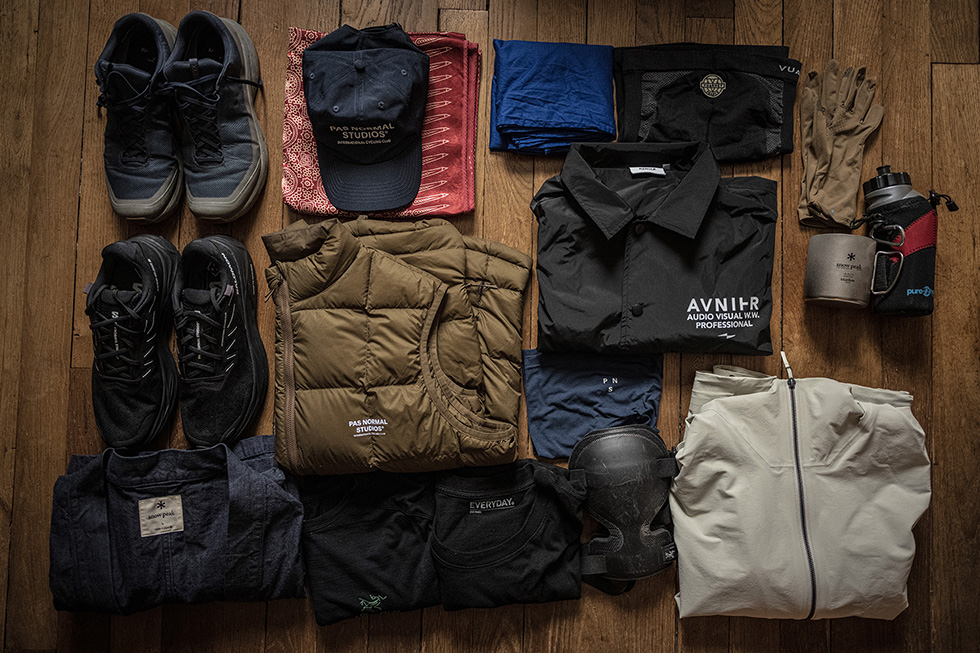
CLOTHING
From left to right and top to bottom:
Arc’teryx Gore-Tex hiking shoes
A red scarf with a traditional design from the area of the Rann of Kutch desert that I bought onsite. I used it to wrap my camera in my backpack, and it could have been used in various ways in an emergency situation.
Pas Normal studio cap (Unfortunately currently sold out)
The amazing blue Shemagh from Forclaz (apparently sold out)
Pas Normal Studios Off-Race Down Vest
AVNIER Audiovisual Professional windbreaker
UV protection desert gloves from Decathlon, and titanium mug from Snow Peak
Filtration water bottle (Pure Hydration)
Snow Peak canvas Noragi Jacket
Arc’teryx Merino T-Shirt
Arc’teryx LEAF Combat Knee Cap
Arc’teryx Quartic Jacket
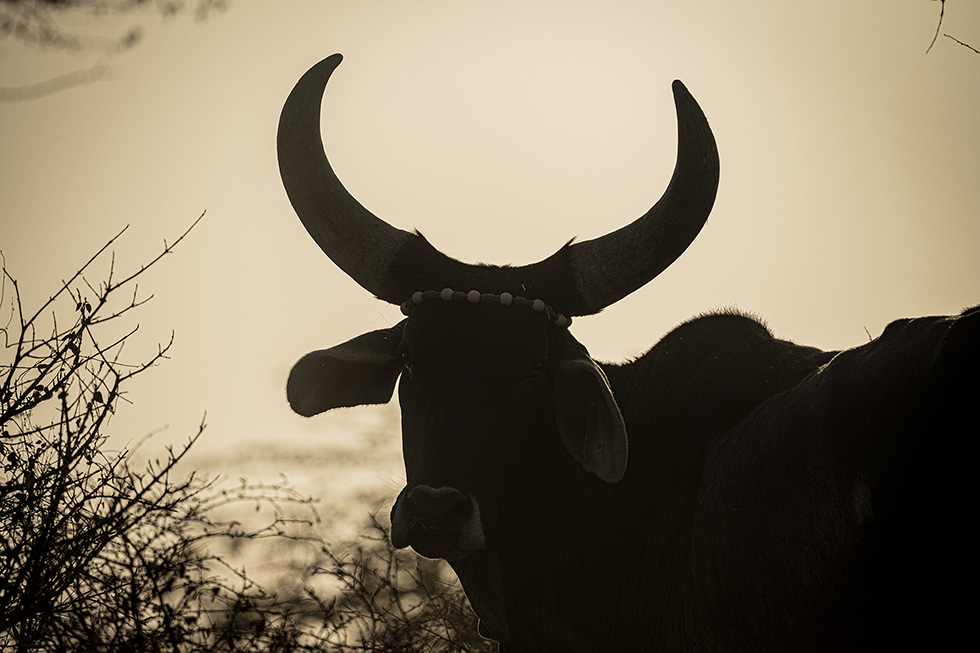





 Carry Awards
Carry Awards Insights
Insights Liking
Liking Projects
Projects Interviews
Interviews
